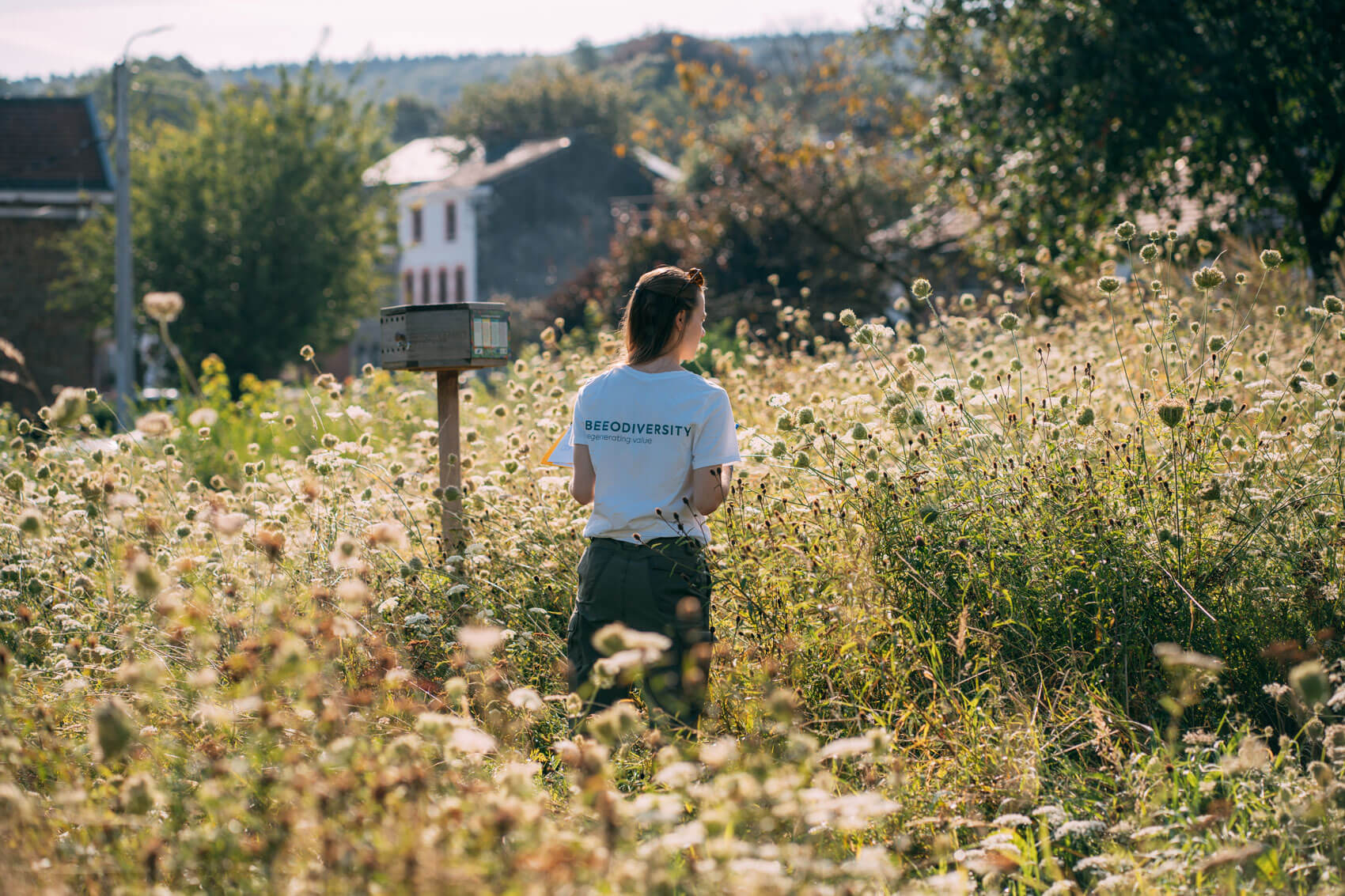Real estate: How biodiversity can boost your BREEAM score?

Genval, Belgique 2024, crédits photo Marine Nardelloto
Preparing for BREEAM version 7
As sustainability becomes a cornerstone of the construction industry, biodiversity is gaining prominence in environmental assessments, particularly with the upcoming launch of BREEAM Version 7 in early 2025. The Building Research Establishment (BRE) is aligning its criteria with evolving global standards, placing a stronger emphasis on biodiversity as a critical component of sustainable design.
For companies in Belgium and beyond, this presents an opportunity to not only enhance their BREEAM scores but also contribute to ecological resilience. In this article, we’ll explore how integrating biodiversity can impact BREEAM assessments and why preparing for Version 7 is essential.
The growing role of biodiversity in BREEAM
BREEAM (Building Research Establishment Environmental Assessment Method) is one of the most widely used sustainability assessment tools for buildings and infrastructure. It evaluates developments across multiple categories, including energy, water, health and wellbeing, and land use and ecology. The upcoming Version 7 of BREEAM signals a shift towards Biodiversity Net Gain (BNG), reflecting global trends in environmental responsibility.

Genval, Belgique 2024, crédits photo Marine Nardelloto
What’s new in BREEAM version 7?
- Mandatory Biodiversity Net Gain:
With new regulations requiring a minimum 10% net biodiversity gain, BREEAM Version 7 will make compliance essential for higher ratings. This aligns with international standards, such as the UK’s Environment Act 2021.
- Adoption of the DEFRA metric tool:
The DEFRA Metric Tool will replace the Land Use and Ecology (LUE) tool, offering more precise calculations of biodiversity impacts and gains. This change ensures transparency and reliability in assessing a project’s ecological performance.
- Focus on long-term biodiversity management:
Version 7 emphasizes not just creating biodiversity gains during construction but sustaining them through robust management plans. This includes Landscape and Ecology Management Plans (LEMPs) that outline maintenance strategies for at least five years post-construction.
- Flexibility for smaller projects:
For developments with limited footprints, the new Small Sites Metric (SSM) offers an alternative approach, enabling tailored biodiversity assessments.
How biodiversity enhances BREEAM scores
Biodiversity plays a critical role in the Land Use and Ecology category of BREEAM assessments. By integrating biodiversity-focused strategies, developers can achieve higher scores and stand out in the market. Here’s how:
- Ecological value enhancement
Protecting and enhancing a site’s natural features contributes to credits under the Land Use and Ecology section. Examples include preserving existing habitats such as hedgerows and mature trees, or creating new habitats like wildflower meadows, green roofs, and wetlands.
- Biodiversity Net Gain achievements
Achieving net gains in biodiversity is no longer optional. Measures such as planting native species, incorporating pollinator-friendly landscaping, and establishing wildlife corridors directly impact BREEAM scores.
- Appointment of Suitably Qualified Ecologists (SQEs)
Early engagement with SQEs ensures that biodiversity measures are scientifically sound and tailored to the project. Their expertise helps align development goals with BREEAM criteria, increasing the likelihood of achieving higher ratings.
- Stakeholder Engagement
Involving local communities in biodiversity initiatives, such as creating communal green spaces or wildlife education programs, adds value to the project and supports BREEAM credits related to stakeholder collaboration.
Strategies to integrate biodiversity and boost your BREEAM score
- Conduct early ecological assessments
Assess the ecological baseline of your site at the planning stage. This will help identify opportunities to minimize disruption and maximize biodiversity gains.
- Incorporate habitat creation features
Include biodiversity-friendly elements in the design, such as living walls and roofs, pollinator habitats like bee hotels, ponds and wetlands to support aquatic species.
- Implement a long-term biodiversity plan
Develop a LEMP (Landscape and Ecological Management Plan) to ensure biodiversity enhancements are maintained well beyond the construction phase. Regular monitoring and reporting are critical for achieving and sustaining credits under the new standards.
- Partner with biodiversity experts
Collaborating with specialists ensures that biodiversity initiatives are effectively implemented and aligned with BREEAM requirements. Organizations like BeeOdiversity bring unique expertise to the table, offering biomonitoring and ecological assessment services tailored to BREEAM projects.
Why Partner with BeeOdiversity?
As biodiversity takes center stage in BREEAM assessments, working with experts like BeeOdiversity will significantly enhance your project’s ecological performance with tangible benefits:
- Experienced Suitably Qualified Ecologists (SQEs):
Our team includes SQEs who are experts in conducting BREEAM assessments and guiding projects to meet compliance.
- Expertise in ecological strategy development:
We work closely with you to create practical, actionable strategies that align with your project goals and BREEAM criteria.
- Tailor-made recommendations:
Beyond assessments, our SQEs provide customized strategies to improve biodiversity on your site and help you maximize credits.
- Guidance on achieving and maintaining Biodiversity Net Gain:
Our team helps you implement and sustain long-term biodiversity enhancements, ensuring ongoing value and compliance.

Audit écologique, Belgique, crédits photo Danaé De Blieck
Conclusion
Biodiversity is no longer a peripheral concern but a cornerstone of sustainable development and a key driver of BREEAM success.
With the launch of BREEAM Version 7 on the horizon, now is the time to prepare for heightened biodiversity requirements.
By integrating ecological strategies into your projects and collaborating with specialists like BeeOdiversity, you can not only boost your BREEAM score but also go beyond and contribute to a more sustainable future.
For more information on how BeeOdiversity can support your project, get in touch with us.
To change tomorrow, contact us today
Want to halt the loss of biodiversity and create value? Do you have an idea or do you want to find out more about our approach and our services ?
Complete the form below and we will get back to you as soon as possible.
Terms of service & General conditions of use
BeeOdiversity develops projects in several European countries, Switzerland and the United States. Its tools and services can be used the world over.
To contact us from Belgium and abroad : +32 2 428 00 82
Head office :
Avenue Arnaud Fraiteur 15-23
1050 Brussels, Belgium
0 Comments